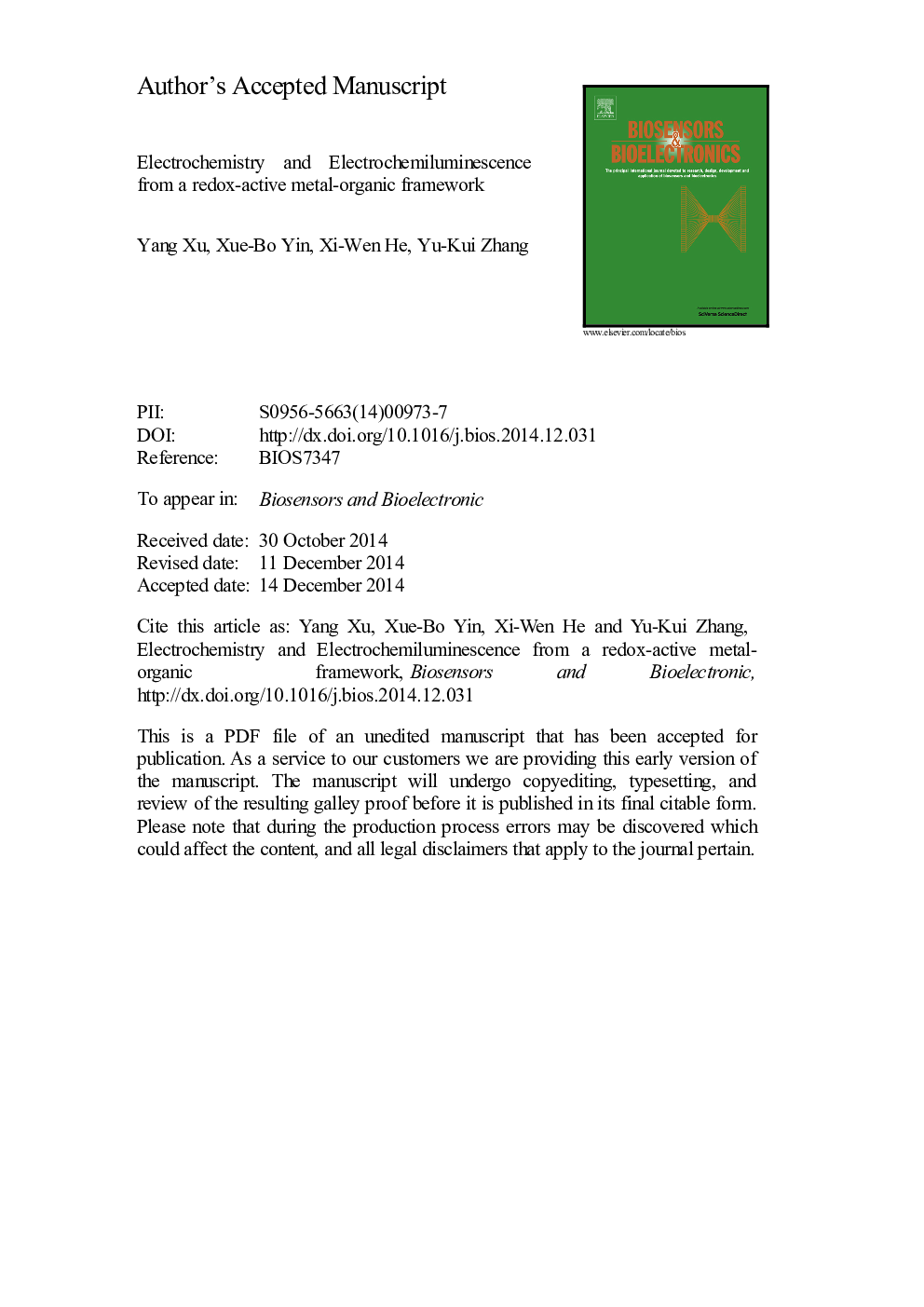| Article ID | Journal | Published Year | Pages | File Type |
|---|---|---|---|---|
| 7232384 | Biosensors and Bioelectronics | 2015 | 28 Pages |
Abstract
The marriage of metal-organic frameworks (MOFs) and electrochemiluminescence (ECL) can combine their merits together. Designing ECL-active MOF with a high electron transfer capacity and high stability is critical for ECL emission. Here we reported the ECL from a redox-active MOF prepared from {Ru[4,4â²-(HO2C)2-bpy]2bpy}2+ and Zn2+; a property of MOFs has not been reported previously. The MOF structure is independent of its charge and is therefore stable electrochemically. The redox-activity and well-ordered porous structure of the MOF were confirmed by its electrochemical properties and ECL emission. The high ECL emission indicated the ease of electron transfer between the MOF and co-reactants. Furthermore, the MOF exhibited permselectivity, charge selectivity, and catalytic selectivity along with a stable and concentration-dependent ECL emission toward co-reactants. ECL mechanism was proposed based on the results. The detection and recovery of cocaine in the serum sample was used to validate the feasibility of MOF- based ECL system. The information obtained in this study provides a better understanding of the redox properties of MOFs and their potential electrochemical applications.
Related Topics
Physical Sciences and Engineering
Chemistry
Analytical Chemistry
Authors
Yang Xu, Xue-Bo Yin, Xi-Wen He, Yu-Kui Zhang,
